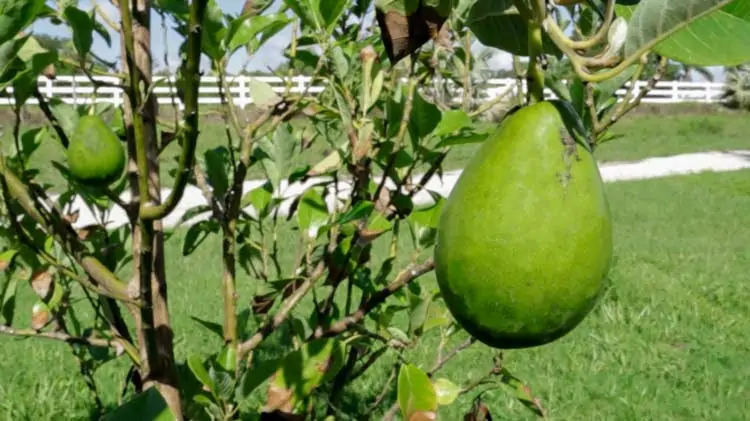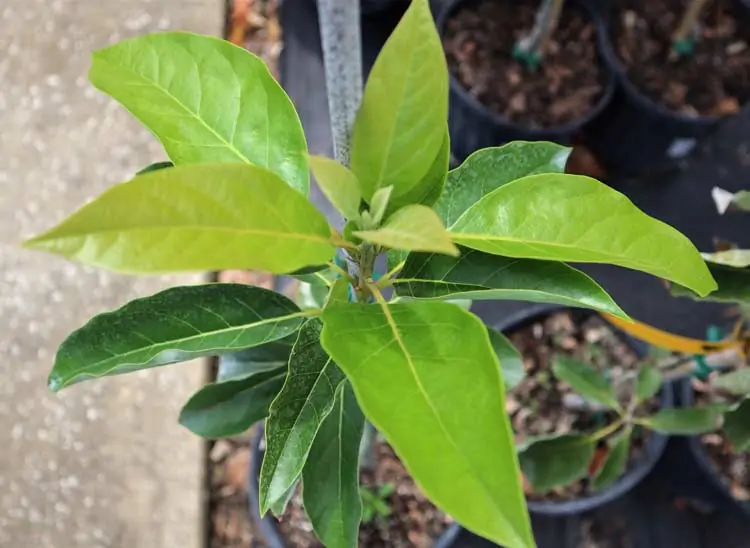by Amanda Rose Newton
All month long we are celebrating tropical fruits that we are fortunate enough to be able to grow here in Brevard county.

Last week, we touched on mangoes and this week is all about avocados! Despite their prominent usage in savory dishes, avocados are botanically classed as a fruit– a drupe to be specific. Drupes are characterized by having one large seed or “stone” instead of many dispersed throughout their fleshy interior. Peaches, nectarines, plums, cherries, apricots, dates, and mangoes are also members of club Drupe.
From an evolutionary perspective, it is likely avocados were spread by the once prominent megafauna (think mammoths or giant ground sloths) who could easily pass that huge seed with little issue.
In the last couple of decades, avocados went from a novelty to one of the most sought after and versatile foods in the grocery store with good reason. Full of healthy fats (including those important Omega-3 fatty acids), vitamins, and minerals, avocados are a great way to add nutritional density to any meal while only using a small amount.
The tree itself reflects this mantra, requiring low inputs and yielding high outputs. Having a single tree produce over 100 avocados a year is not unusual, given the right environmental conditions.

While here in the USA we tend to think of the avocado as an accoutrement to a spicy South American-inspired meal, it is popular sweetened up with sugar, honey, or coconut milk and served as a refreshing drink in the South Pacific.
Avocados have gained popularity as a great all-natural fat substitute and can even serve as a stand-in for butter in cake and frosting recipes due to its neutral taste!
How to Cut an Avocado
Cutting an avocado can seem daunting due to its soft flesh and large seed, but it’s quite simple — all you need is a spoon!
First, hold the avocado with the short side up and slice it vertically in half. Once you have your two halves, remove the large seed with a spoon. Then, using just the tip of the knife, slice to flesh into slices or cubes without piercing the skin. Use the spoon to scoop out the avocado flesh away from the wall of the skin for perfect, even slices.
All exposed avocados will brown up when they encounter oxygen, just like apples. To slow down the process, squeeze a little lemon juice in with your slices to keep them looking their best. If you are making guacamole, be sure to use a little bit of the citrus juice of your choice to keep it green.
Choosing the Perfect Avocado
Like mangoes, there are hundreds of varieties of avocados out there, each with its own unique attributes to offer.
Here at Rockledge Gardens, we have carried close to 30 different avocados in the past and are always looking for new cultivars to mix in for variety.
For avocados, oil content seems to be the driving factor for preference. If you cannot imagine life without guacamole, you are probably looking for something at least 16% oil, to allow for that rich, buttery mouthfeel and easy-to-mash quality.
If you like slicing avocados for sandwiches, you want to plant something that stays firmer, with lower oil content. For smoothies and just all-around use, somewhere right in the middle is where you want to be.
The “Hass” variety, found at the grocery store, resides in sunny, dry California and not Florida. There are plenty of varieties to choose from that do grow well here, and a few of the most popular varieties and their stats are listed below to aid in your decision-making.
Avocados with High Oil Content
Brogdon: Oval-shaped with black peel and creamy rich flavor. Closest to what is found at the grocery store!
Bacon: Green peel and creamy, nutty taste.
Fantastic: Fast-growing with a green peel, cold hardy, and high in oil.
Lila: High in oil, medium size with a green peel.
Joey: High in oil, egg-shaped black peel.
Winter Mexican: Dark green peel, 30% oil content, nutty flavor.
Mexicola: Tiny, egg-shaped, edible peel
Avocados with Lower Oil Content
Hall: Large fruit with dark green peel
Lula: Round, green fruit, great for slicing.
Monroe: Large, dark green fruit, with a nutty flavor.
Russell: Green, interesting shape, good flavor.
Marcus Pumpkin: Runs in the middle on oil content, green, and round.
When planting an avocado, it’s important to remember that they do not like to have “wet feet” and benefit from some elevation or a drier part of the yard.
Additionally, as members of the Laurel family, they are susceptible to ambrosia beetles spreading a fungal agent that causes wilt and eventual death in trees if not caught. Overall, avocados are not fussy considering they are a nutritional powerhouse, making them an excellent addition to any Space Coast landscape.
Tropical fruit month is on all month long! Be sure to stop by the farmer’s market to sample and purchase different varieties of new-to-you fruit that may end up taking residence in your own edible landscape and jump on over to our video tutorials to learn more about avocados and other tropical fruits from the head of our fruit department, Seth!


